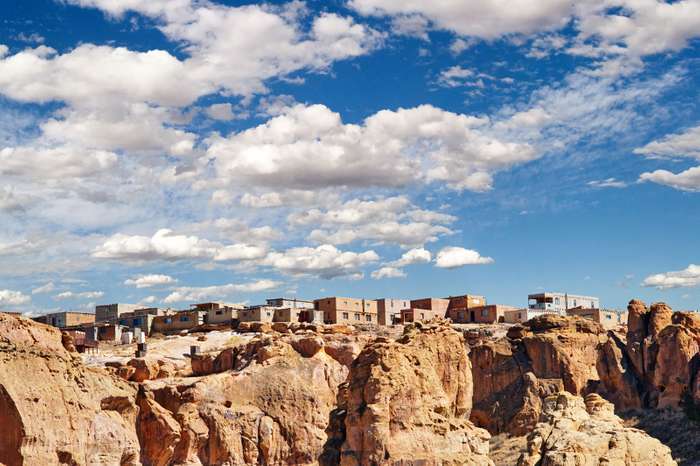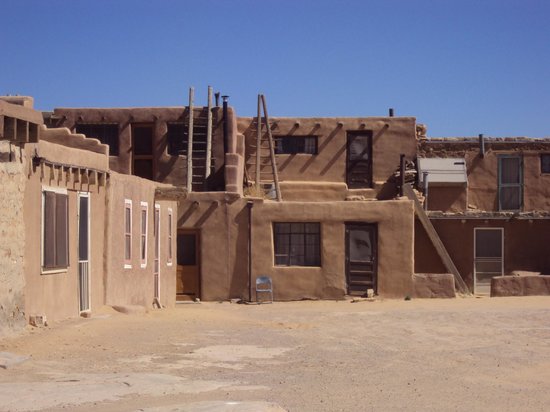
Today the primary source of funding for the tribe’s housing authority is through a grant program that funds tribal housing projects—so long as they meet standards set by Housing and Urban Development. These standards force projects to conform to Western design principles. As a result, tribal members live in Western-style project homes—homes that don’t incorporate cultural needs, aren’t energy efficient, and undercut community self-sufficiency.
But some indigenous people are fighting back. They’re working to revitalize traditional architecture in Native communities, insert traditional principles into Western architecture training programs, and build housing justice in Indian Country.
Research shows that architecture that reflects local traditions and heritage provides social and cultural benefits. Architecture that uses interlocking spaces, colors, and designs rooted in local traditions provides residents—especially those in vulnerable communities—with security, and can lead to social change.

Traditional architecture can also build climate resiliency. Because it was developed over the course of thousands of years by indigenous people, traditional architecture is well-adapted for local climates. The cultural and environmental benefits stand in contrast to Western architecture in the U.S. and Canada, where housing laws, markets, and architectural standards have commodified housing and stripped non-monetary values from design priorities—values like community strength and resiliency.
We should consider the connection between architecture, design, and cultural values. For example, what do homes with large garages and tiny kitchens say about modern American culture? Do the standard models we see in communities today support the cultural and socio-economic diversity of this country—or do they force cultural assimilation?
And how can we create homes that represent the cultural values we want—homes that are sustainable, healthy, and that build strong communities—without appropriating traditional architecture? Beginning to answer some of these questions is a step toward building housing justice for all our unique communities—on the reservation and beyond.
You can read the original article at www.yesmagazine.org
